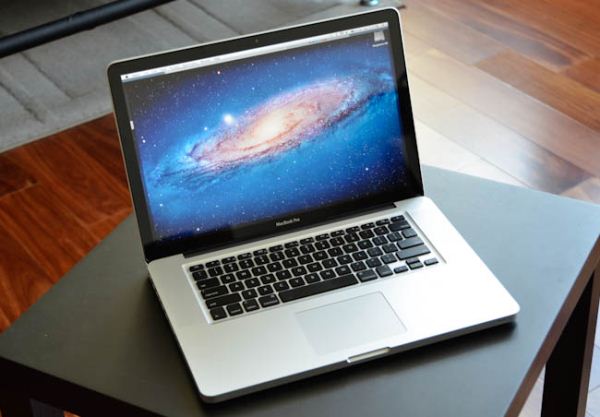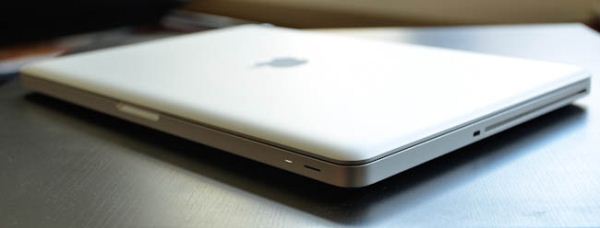The 2012 MacBook Pro Review
by Vivek Gowri on July 18, 2012 2:00 PM EST- Posted in
- Mac
- Apple
- MacBook Pro
- Laptops
- Notebooks
With most of the attention from Apple's hardware refresh event centered around iOS 6 and the new Retina MacBook Pro, the updated 2012 edition of the regular MacBook Pro has flown a little bit under the radar. Basically, it’s just an Ivy Bridge-infused version of the venerable unibody MacBook Pro chassis that we’ve known and loved for the last few years. The details don’t bring any particularly earth-shattering revelations, with 13” retaining the dual-core processor and integrated graphics, while the 15” makes the switch from AMD to Nvidia’s new Kepler-based GT 650M dedicated graphics. Along with Ivy Bridge, the 2012 MBP line gets HD 4000 graphics and USB 3.0 across the board, plus a free update to Mountain Lion when it releases later this summer. Naturally, it doesn’t generate the same kind of excitement that the all-new, all-awesome Retina MacBook Pro does. But is a less headline-worthy computer necessarily a worse one?
It’s pretty difficult to find things to write about the 2012 MacBook Pro hardware. You can essentially sum it up in one paragraph, or even one sentence if you try hard enough. The 2012 MBP looks exactly like the 2011 MBP, which looked exactly like the 2010 MBP, which looked exactly like the post-April 2009 MBP. It’s likely to be the last iteration of the original unibody MBP, giving this body style a 4.5 year run as one of the most instantly recognizable notebook computers on the market. I’m not going to go too far in depth with analyzing the design, because we’ve gone over it a few times over the years (here, here, here, here, here, and here. Oh and here too, just for good measure.)
It’s a solid notebook, that much is certain. From an SKU standpoint, Apple has kept things relatively straightforward, with a high end and a low end for both the 13” and 15” models. Starting at $1199, the MBP13 comes with a 2.5GHz Core i5-3210M, 4GB DDR3, and a 500GB HDD, while the higher end SKU bumps that to a 2.9GHz i5-3520M, 8GB DDR3, a 750GB HDD, and a $1499 pricetag. Other than the updated processor/integrated graphics and the addition of USB 3.0, the 13” is identical to the previous model that we covered in depth last year.
The 15” is a bit more interesting. The base $1799 SKU comes with a quad-core i7-3615QM (2.3GHz) and a 512MB Nvidia GeForce GT 650M dGPU, but makes do with a paltry 4GB of memory and a 500GB hard drive. The standard memory and storage configuration in a nearly-$2000 notebook is pretty unacceptable. This being Apple, upgrade pricing is still a hair away from being highway robbery, but at least the matte WSXGA+ screen upgrade costs a reasonable $100. Thankfully, unlike the rMBP and MacBook Air, you can always opt to buy RAM and storage upgrades on your own.
| 2012 MacBook Pro Lineup Comparison | |||||
| 15-inch Mid 2012 MacBook Pro | MacBook Pro with Retina Display | ||||
| Dimensions | 0.95 H x 14.35 W x 9.82" D | 0.71 H x 14.13 W x 9.73" D | |||
| Weight | 5.6 lbs (2.54 kg) | 4.46 lbs (2.02 kg) | |||
| CPU | Core i7-3615QM | Core i7-3720QM | Core i7-3615QM | ||
| L3 Cache | 6MB | 6MB | 6MB | ||
| Base CPU Clock | 2.3GHz | 2.6GHz | 2.3GHz | ||
| Max CPU Turbo | 3.3GHz | 3.6GHz | 3.3GHz | ||
| GPU | Intel HD 4000 + NVIDIA GeForce GT 650M | ||||
| GPU Memory | 512MB GDDR5 | 1GB GDDR5 | |||
| System Memory | 4GB DDR3-1600 | 8GB DDR3-1600 | 8GB DDR3L-1600 | ||
| Primary Storage | 500GB 5400RPM HDD | 750GB 5400RPM HDD | 256GB SSD | ||
| Optical Drive | Y | Y | N | ||
| Display Size | 15.4-inches | ||||
| Display Resolution | 1440 x 900 | 2880 x 1800 | |||
| Thunderbolt Ports | 1 | 2 | |||
| USB Ports | 2 x USB 3.0 | ||||
| Other Ports | 1 x Firewire 800, 1 x Audio Line in, 1 x Audio Line out, SDXC reader, Kensington Lock slot | SDXC reader, HDMI out, headphone out | |||
| Battery Capacity | 77.5 Wh | 95 Wh | |||
| Price | $1799 | $2199 | $2199 | ||
The unit we’re looking at here is the high-end 15” SKU, with a 2.6GHz i7-3720QM and a 1GB version of the GT 650M, plus 8GB memory and a 750GB HDD. It rings up at $2199, which interestingly is the same as the base rMBP (i7-3615QM/8GB/256GB SSD/1GB GT 650M). I’m mostly certain that it’s not the configuration to get - you’re better served by getting a base 2.3GHz 15”, adding the $100 high-res screen, and grabbing a 256GB SSD (~$250) and an 8GB RAM upgrade (~$50) separately from Newegg or Amazon. Boom. You spend roughly the same $400, depending on your SSD choice (I would go Samsung SSD 830), and end up with a system with a better screen that’s faster in most day to day situations. Unless you have a really specific need for the extra 512MB vRAM or 300MHz clock speed increase, I’d recommend against it.












132 Comments
View All Comments
Sunburn74 - Thursday, July 19, 2012 - link
What? you have to buy something in order to be able to rightfully criticize it these days?stimudent - Friday, July 20, 2012 - link
Another overpriced Apple product.stimudent - Friday, July 20, 2012 - link
Anything that gives us an alternative to Windows is a good thing. Now if only we could get away from Intel chips.Hendrix248 - Saturday, July 21, 2012 - link
Never heard of Linux? Why would you want to move away from the best chips on the market?Belard - Wednesday, July 18, 2012 - link
As another has posted, its a standard design.... and it is a bit expensive. A ThinkPad T500 with the same specs that comes out of the same FOXCONN company sells for several hundred dollars less.okay, where is the full review on the Motorola Atrix HD?!
Belard - Wednesday, July 18, 2012 - link
By the way... a physical Ethernet port is still very handy for those times when you cannot get WIFI... there are some hotels/motels who are still wired. Or if you are at a location or family place where the WIFI fails or they lose the WiFi Password.Or you are at a clients place and need quick access and they don't want to give your wifi access.
inplainview - Thursday, July 19, 2012 - link
It has Ethernet over Thunderbolt....Hendrix248 - Saturday, July 21, 2012 - link
After you buy the adapter...Grok42 - Sunday, July 22, 2012 - link
Wi-Fi is great for quickly connecting to the Internet and other casual usage but I think apple has really underestimated the need for a wired connection, at least with current Wi-Fi tech. The problem with Wi-Fi is that it has a MUCH higher latency than a wired connection. This is important for voice, video or remotely viewing desktops. Wi-Fi is also very prone to dropping connections if for only a split second. You would never notice when browsing the web as the connection is stateless. However, if you use any networking services that won't survive a dropped connection it can be frustrating. These services include copying files, SSH, RDP, VNC, etc.Probably the biggest need for Ethernet is when dealing with large files. I can transfer a 15GB file from our servers in a few seconds with a gigabit Ethernet port. I have had it take hours to copy the same file over Wi-Fi. That is unless the signal drops at which point you will want to throw things when you have to start over again.
It seems that Apple or someone should be working on standardizing a slimmer version of the RJ-45 connector. Dongles go against everything Apple stands for on the design side.
sandro - Tuesday, July 24, 2012 - link
This is something I have been wondering since some time. What is in the way of standardizing a slimmer RJ-45 connector? Adapters would be so inexpensive that they could be included with the product. I wonder why Apple went this way instead of making a thunderbolt to ethernet dongle, which by construction costs quite some money and takes away one (to become) precious port.